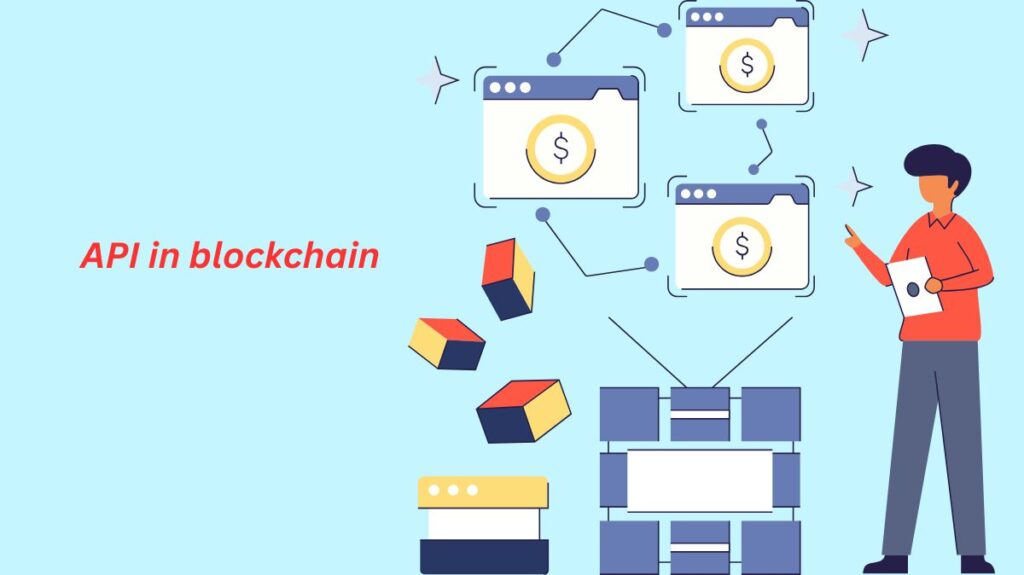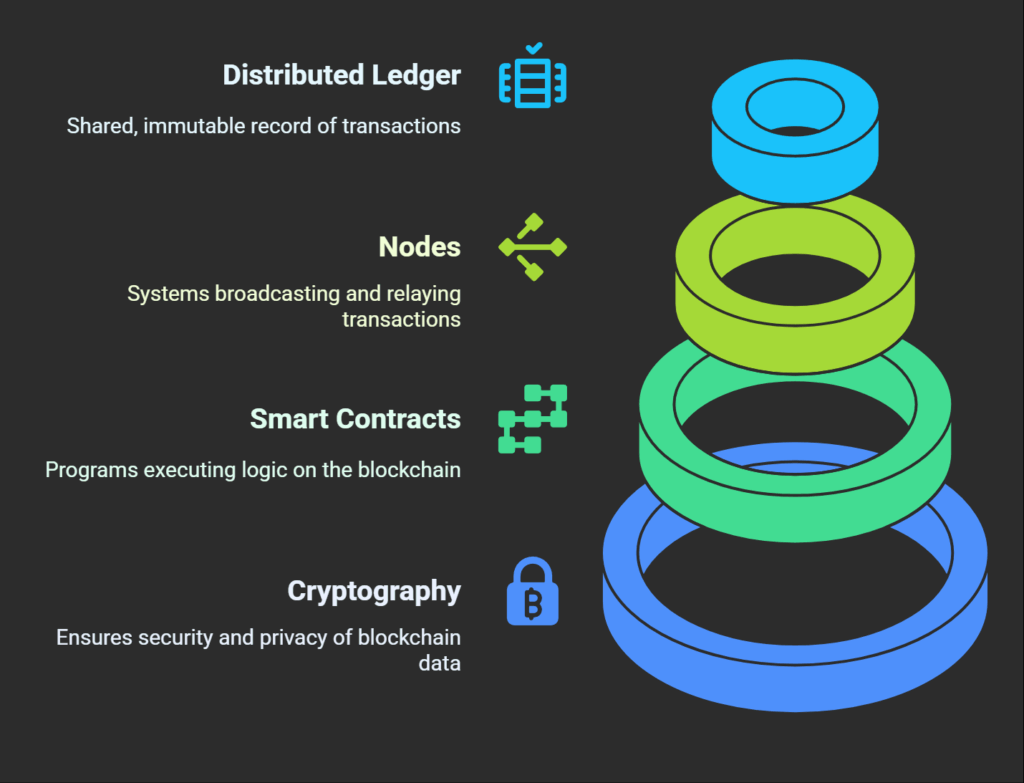What is API in blockchain?

A collection of guidelines or instructions for data sharing across devices is called an Application Programming Interface (API). It establishes the structure and transmission and reception of information, guaranteeing efficient communication between various systems. One computer may deliver data in 32-bit increments while another anticipates 64-bit increments, for example, if there is no protocol in place.
APIs are interfaces that let users and apps communicate with the underlying blockchain network and its services in the context of blockchain technology. For creating decentralised apps (DApps) and incorporating blockchain features into current systems, they are essential.
This is a thorough explanation of blockchain APIs:
Role and Purpose of Blockchain APIs
Engaging with Blockchain Services
APIs make a blockchain client node’s operations visible, enabling interactions like account management, transaction recording, and smart contract execution.
Facilitating DApp Development
APIs are essential for creating DApps because they let programmers link web apps to blockchain services.
Blockchain Data Querying
They offer ways to retrieve blockchain data, such as account states, block information, and transaction details.
Facilitating Smart Contract Interaction
APIs allow business logic to be executed or value transactions to occur by allowing external accounts or other contracts to contact public methods that a smart contract has exposed.
Integration with Current Systems
In business settings, APIs are essential for connecting blockchain solutions to legacy, off-chain, and back-office systems.
Types and Examples of Blockchain APIs
- A well-known JavaScript package called Web3.js makes it possible for web apps to communicate with Ethereum blockchain nodes. It offers low-level ways to send transactions on the user’s behalf and access blockchain data.
- Web3.eth (for working with accounts and smart contracts), web3.providers (for configuring a particular web3 provider, such as Ganache), and web3.utils (for utility functions, such as random number generation and number conversion) are among the packages that make up Web3.js.
- Provider Object: A JavaScript provider object controls the connection to a node and is in charge of producing JSON-RPC calls on the developer’s behalf.
- Ethereum and Bitcoin both make considerable use of the JSON-RPC API, which enables communication between users and DApps and the blockchain. You can use HTTP to make direct calls to clients like Geth.
- HTTP REST API: REST APIs are available as an interface for clients and transaction processors on certain blockchain platforms, such as Bitcoin and Hyperledger Sawtooth. Etherscan offers a simple HTTP API for blockchain data queries.
- Clients and apps can use Hyperledger Fabric APIs and SDKs to interface with the blockchain. They offer ways to query blocks, deploy and run chaincode (which includes smart contracts), and keep an eye on blockchain events. For rapid testing and little involvement, command-line interfaces (CLIs) that provide a subset of REST APIs are also accessible.
- Bitcoin APIs: Block.io, BitPay, and blockchain.info offer HTTP REST interfaces and functionalities for Bitcoin apps. Bitcoin development libraries include Libbitcoin, Pycoin, and Bitcoinj.
- IBM (Cloud) and Microsoft (Azure) blockchain as a Service (BaaS) platforms let developers prototype and run blockchain apps fast and cheaply. These services manage the blockchain’s infrastructure and software, letting clients focus on business applications.
Blockchain API Components & Underlying Technologies

- Cryptography: To guarantee the security, integrity, and privacy of blockchain operations and data distribution, APIs make use of cryptographic protocols (such as public key cryptography, digital signatures, and cryptographic hash functions).
- APIs make it possible to communicate with smart contracts, which are blockchain-based programs that store business logic and trigger transactions based on predetermined criteria.
- Nodes: Blockchain nodes are separate systems within the network that house the computational environment and carry out tasks like broadcasting and relaying transactions. APIs make it easier to communicate with these systems.
- Distributed Ledger: A shared, unchangeable record of transactions that is replicated across every network node, the distributed ledger is accessed via APIs.
Essentially, by offering programmatic access to the fundamental features of blockchain technology, blockchain APIs enable developers and businesses to fully use its potential and create cutting-edge decentralized applications and solutions.
